Even five decades after the historic moon landing, there are still numerous individuals who believe that the journey to Earth’s satellite was a colossal and costly hoax orchestrated by the American government in an attempt to deceive the entire planet. According to experts at NASA, the initial doubts arose when Neil Armstrong, Buzz Aldrin, and Michael Collins, the crew of the renowned Apollo 11 mission, embarked on their lunar descent on July 20, 1969.
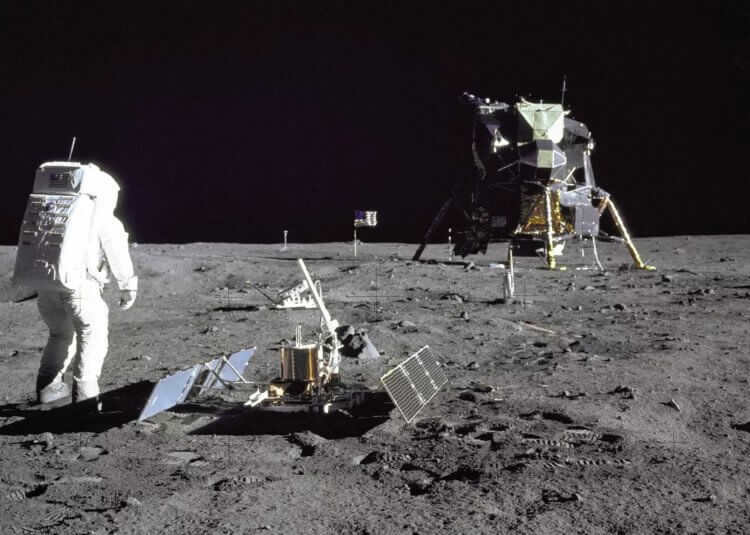
Following the moon landing, a theory known as the “lunar conspiracy theory” emerged, claiming that the entire event was nothing more than a high-quality production created in Hollywood, with the filming taking place on Earth. According to Roger Lanius, a former historian at NASA, approximately 6 percent of Americans still hold onto the belief that the moon missions never occurred, and that the published photos and videos were actually shot in studios on Earth.
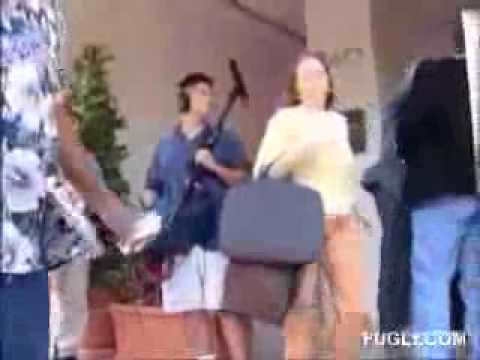
As we commemorate the 50th anniversary of the historic Moon landing, it is important to reflect on the 5 most well-known claims made by conspiracy theorists questioning the legitimacy of the Apollo 11 mission.
What is the reason behind the American flag’s movement in the lunar breeze?
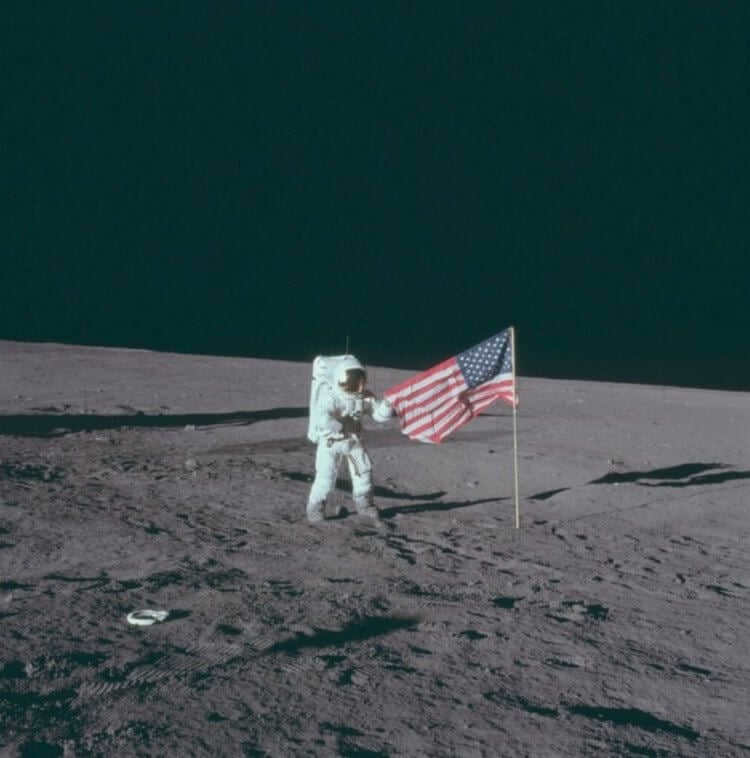
Claim: The movement of the American flag seen in the photographs suggests that there is wind on the moon, which is not possible due to the lack of atmosphere.
Elaboration: The apparent swaying of the flag is actually a result of the way it was planted on the moon’s surface. The astronauts used a collapsible L-shaped rod to attach the flag, but during the installation, Armstrong and Aldrin unintentionally bent the rod. This caused the mechanism to become slightly jammed, preventing the astronauts from fully extending the flag. As a result, the flag appeared to be “fluttering in the wind” in the photographs, even though there is no air or wind on the moon.
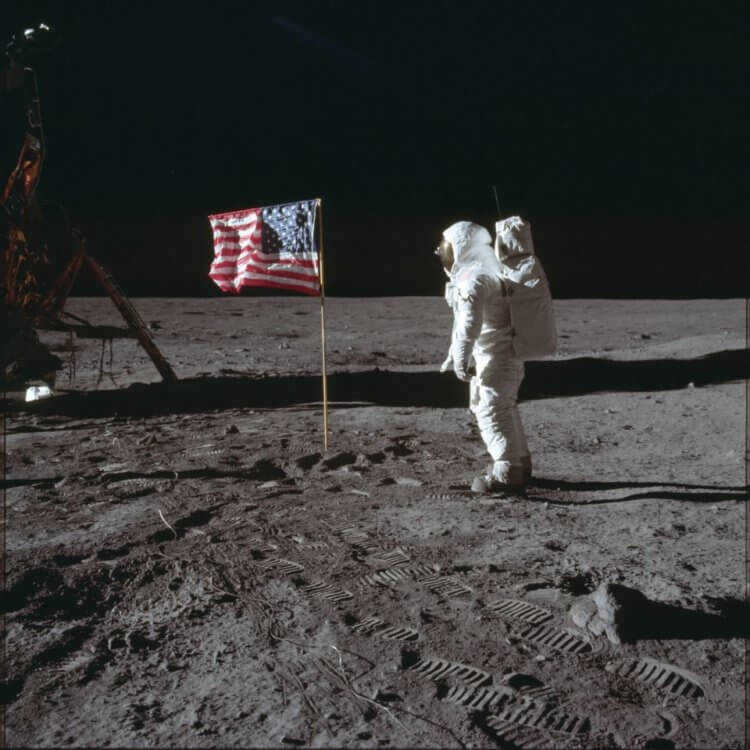
Incidentally, the NASA footage clearly demonstrates that the flag starts to “flutter” only upon contact with the astronauts, during their various movements.
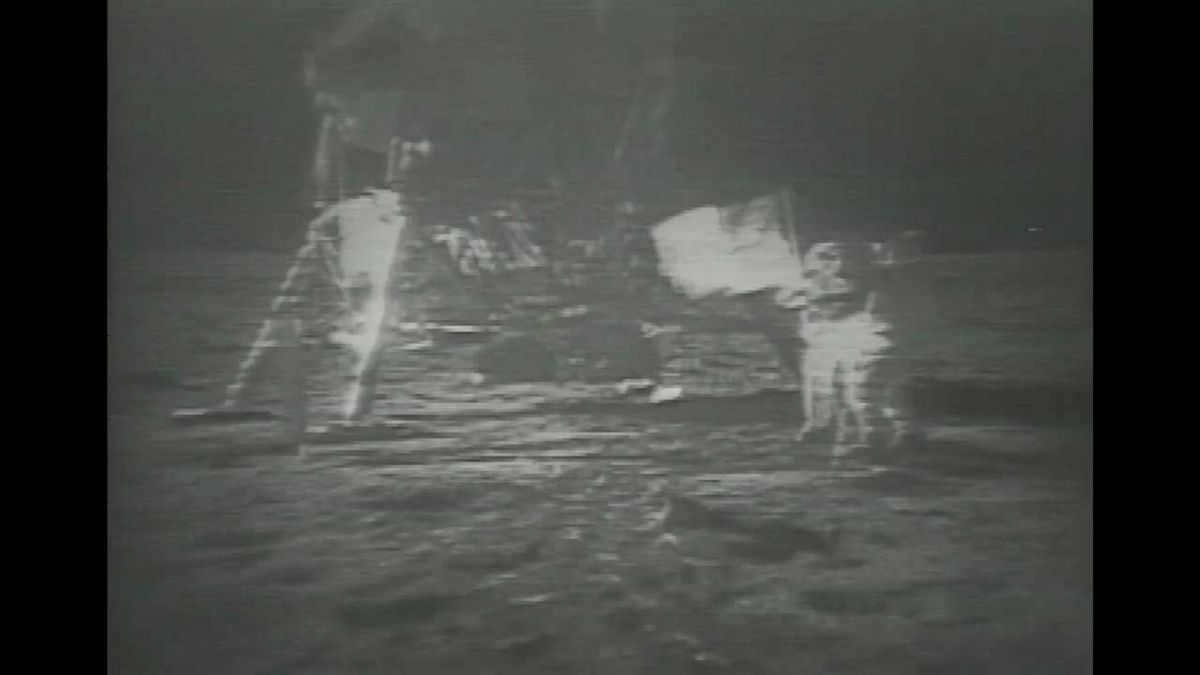

Why don’t the photographs show any stars?
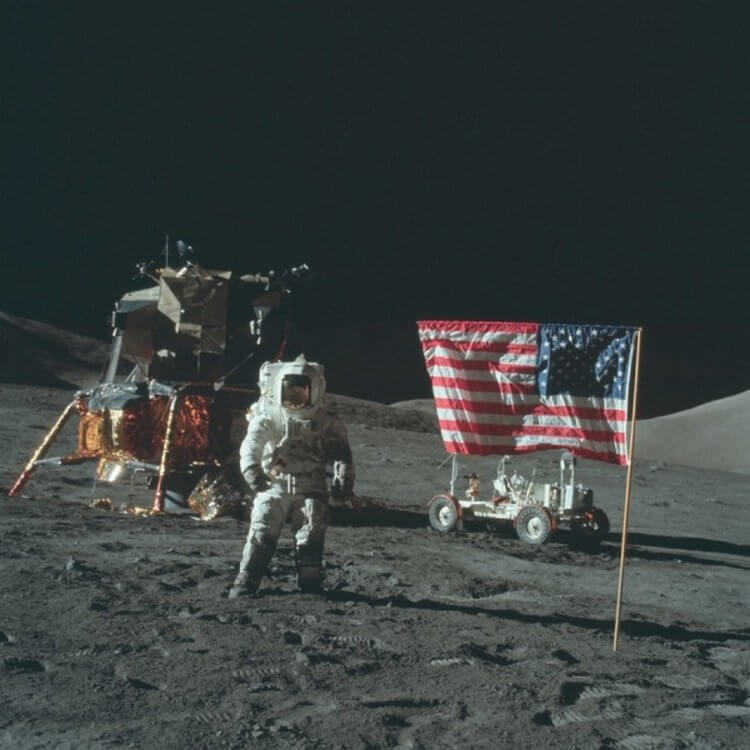
Rephrased Statement: The absence of stars in the photos allegedly taken on the moon’s surface has led to speculation that NASA intentionally removed them to prevent discerning whether the photos were captured on a satellite or on Earth.
Rephrased Explanation: The utilization of very brief shutter speeds during the photography session could explain why the stars are not visible. Slowing down the shutter speed would have allowed the stars to be captured, but it would have compromised the visibility of crucial subjects such as astronauts, lunar landscape elements, and the descent vehicle.
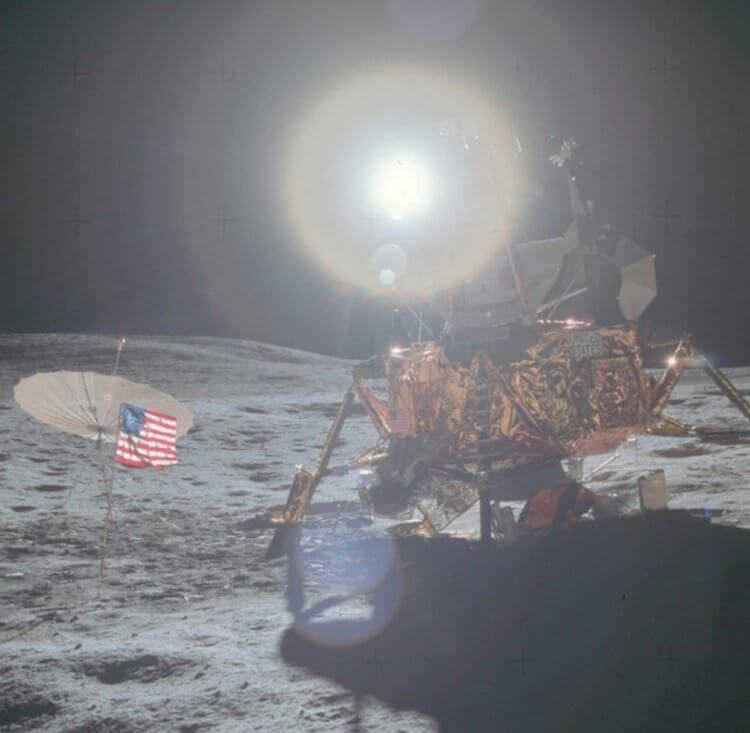

The brightness and level of detail in a photograph are determined by the amount of light that reaches the film. Insufficient light will result in a dark photo, while excessive light will cause overexposure, as exemplified below.
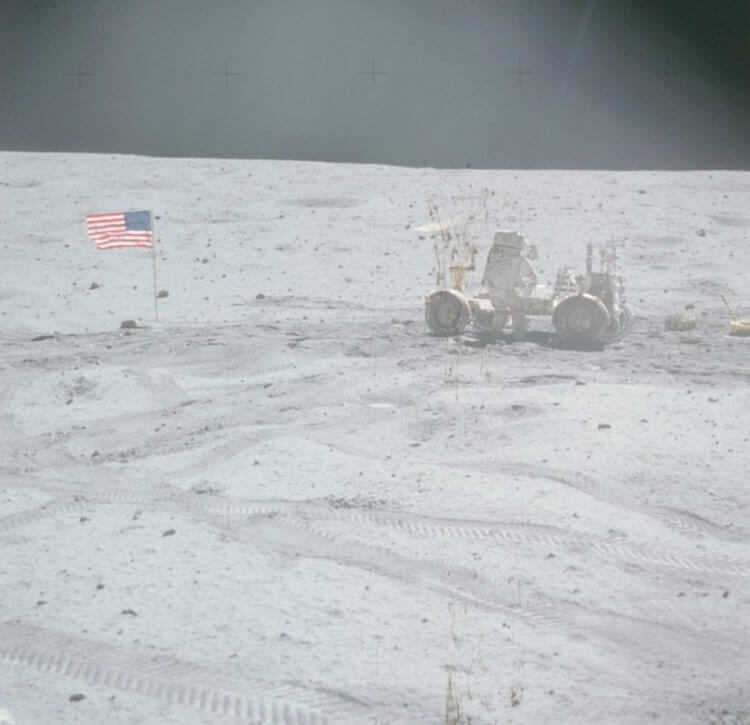
Control over the amount of light can be achieved through adjusting the aperture width and the shutter speed. When there is a significant difference in light levels between the foreground and background, capturing a photo becomes challenging. In essence, the brightness of the Moon makes it difficult to capture both objects on its surface and the fainter stars in the background simultaneously.
What was the reason for the absence of a crater left by the landing module?
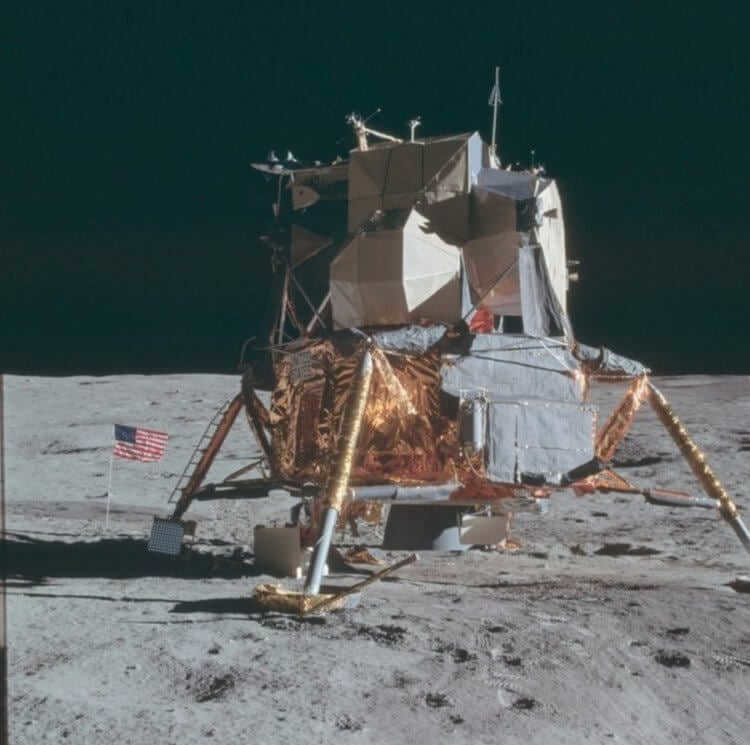
Assertion: Upon touchdown, the lunar module was expected to create an indentation on the lunar surface through the force of its engine; however, no such depression is discernible in the photograph. Moreover, the lunar dust that would have been stirred up during the landing should have settled on the module’s supports, but this was not the case.
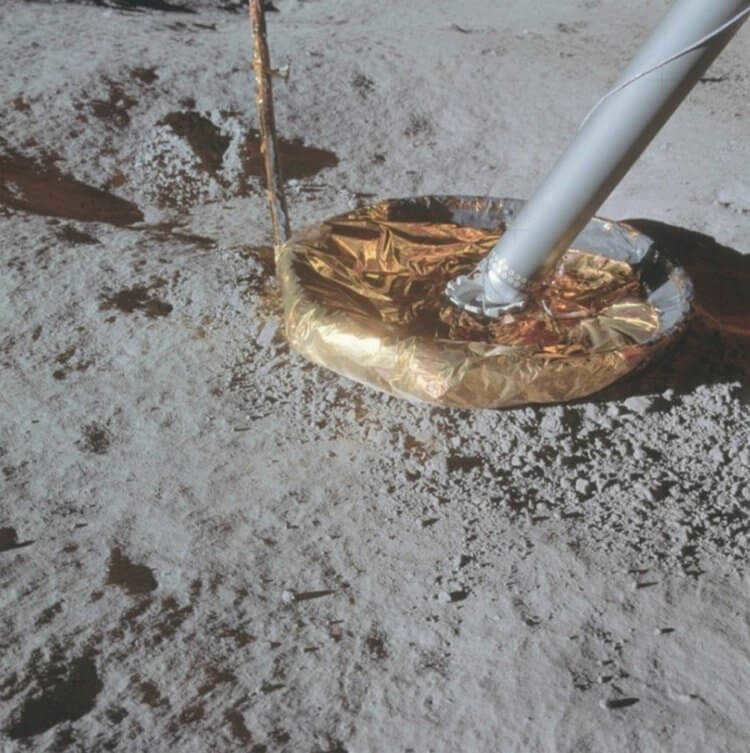
ClarificationDue to the lower gravity on the Moon compared to Earth, the impact caused by the engine’s exhaust streams would have been significantly reduced. Furthermore, as the module approached the surface of the satellite, it descended at a very gentle rate of approximately 15 centimeters per second. The landing was so smooth that the crew did not immediately realize when exactly they touched down.
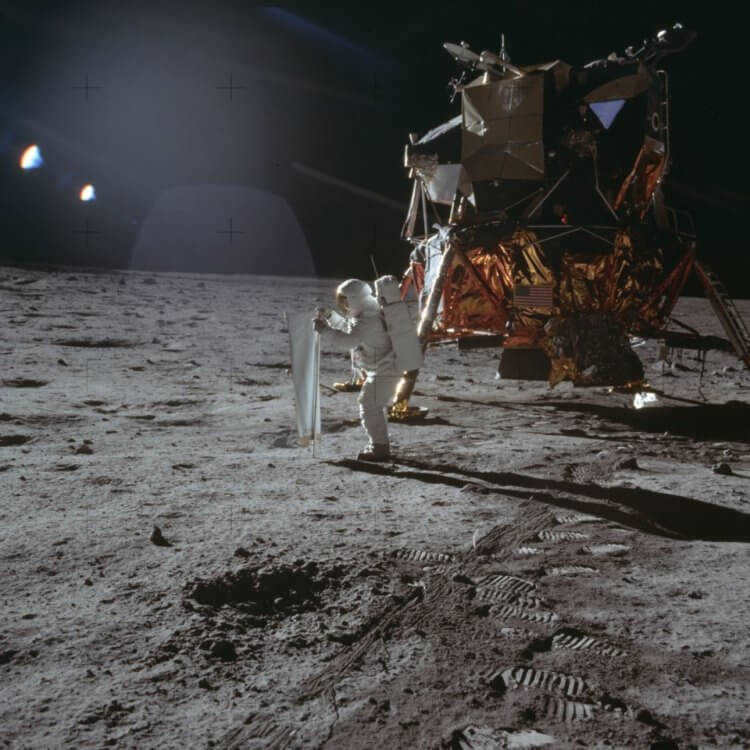
During a rocket launch on Earth, dust is scattered in all directions, creating clouds. However, unlike the Moon, the Earth has air currents that disperse this dust. When the lunar module landed on the Moon, the disturbance of lunar dust only occurred where the supports or jet engine exhausts made contact.
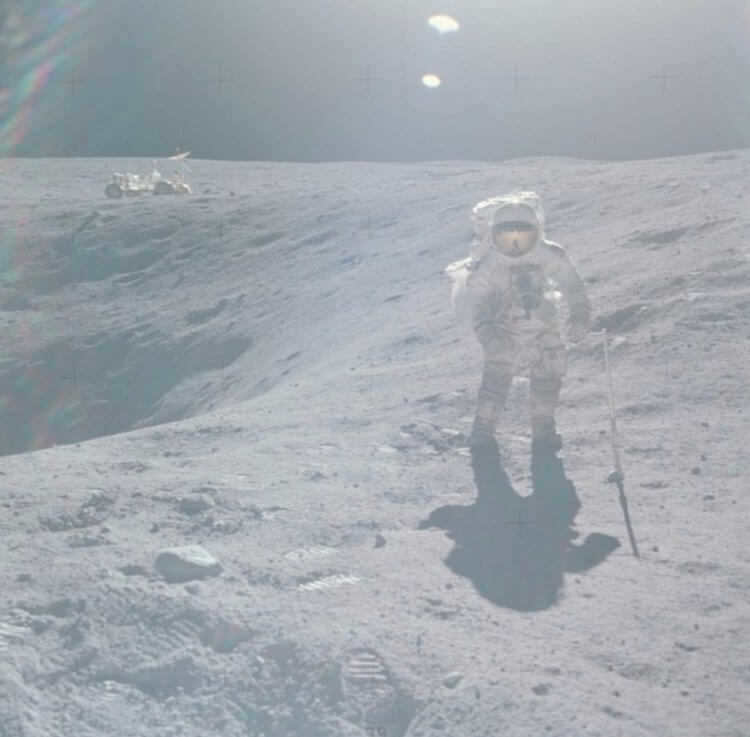
Rephrased Statement: Given that the Sun is the sole provider of light and the Moon lacks an atmosphere to disperse light, why aren’t all shadows pitch black? In certain photographs, the Sun appears to be positioned behind the astronauts, causing the side that should be shaded to face the camera. Surprisingly, all the intricate details are still visible within the shadow. Evidently, the shadow was illuminated by an artificial light source.
Rephrased Explanation: While it is true that the Moon lacks an atmosphere, the lunar surface itself reflects and scatters sunlight in various directions. A portion of this scattered light reaches the Earth. Consequently, some of the scattered light manages to reach the astronaut (depicted in the image) and provide illumination. Since the astronaut’s spacesuit is white, the backlighting from the scattered light is sufficient to render objects visible within the shadows.
Where can the camera be located in the mirror image?
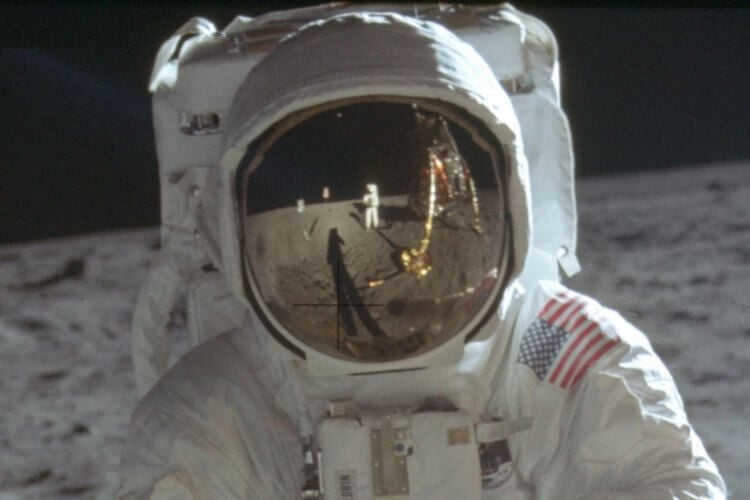

Claim: The reflection of Neil Armstrong and the landing module can be seen in the visor of Aldrin’s spacesuit helmet (pictured above). However, some skeptics argue that there is no visible camera in Armstrong’s hands, leading to speculation that the moon landing was staged.
Explanation: In reality, Armstrong and Aldrin used specially designed chest-mounted cameras during their moonwalk. These cameras allowed them to capture the historic moments without the need to hold a camera in front of their eyes, as is commonly done when taking photographs. Additionally, holding a camera in front of their faces would have been impractical and obstructed by their helmets.
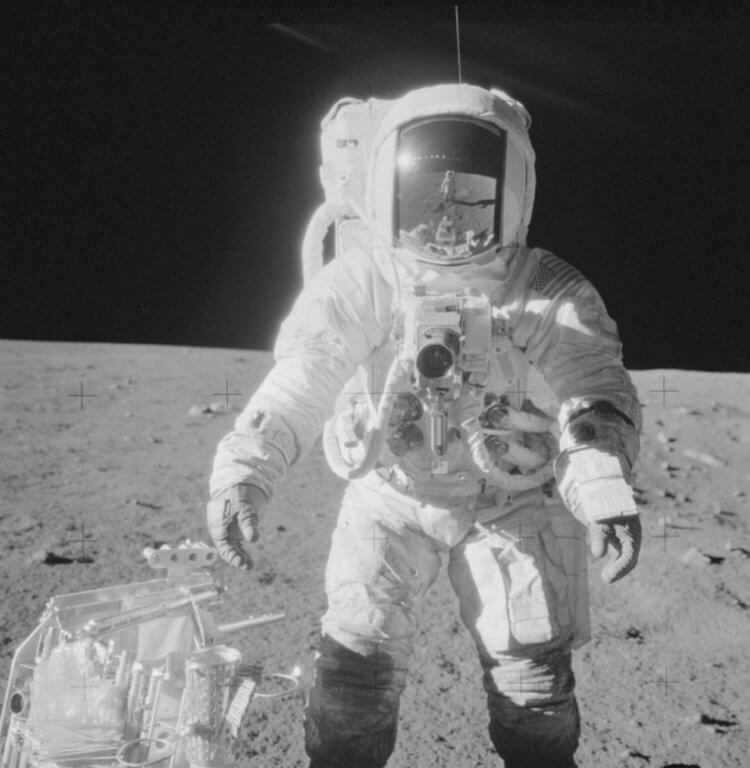

Stay tuned to our Yandex.Zen channel. Daily publications of articles that don’t make it to the website.

Stay up to date with the latest news, articles, and publications.
Engage in free communication and engage in discussions about various topics.
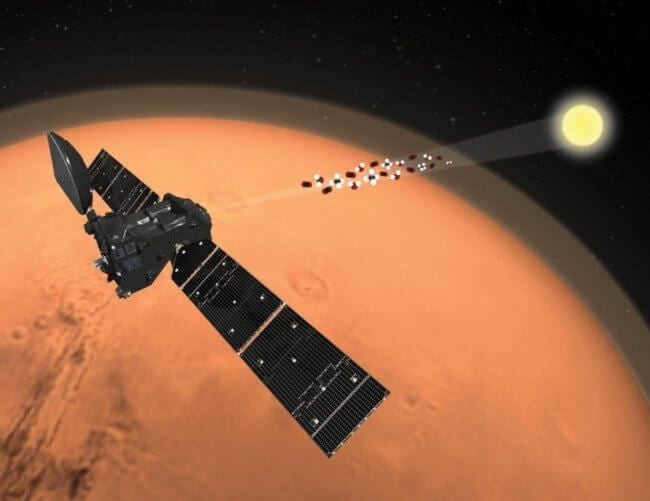
The Trace Gas Orbiter (TGO) probe, part of the joint European-Russian ExoMars mission, has been circling Mars for a year now. In the past twelve months, it has successfully carried out a variety of scientific tasks and collected valuable data about the planet’s atmosphere and surface.
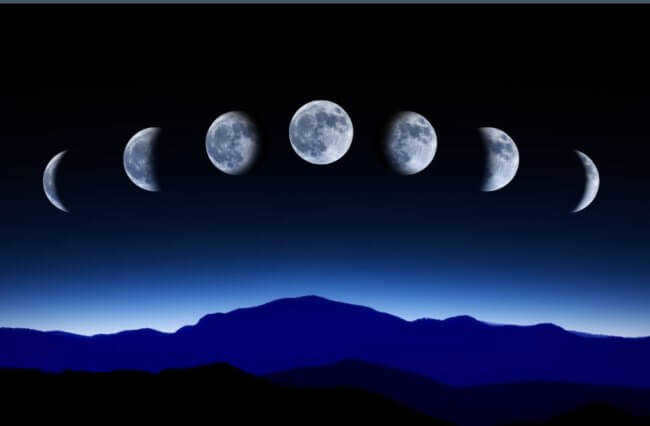
In the upcoming days, scientists are considering the establishment of an exclusive time zone for the Moon. 🌔 Failing to do so would result in significant challenges for future space missions. Primarily, the operations of research vehicles would encounter numerous setbacks.
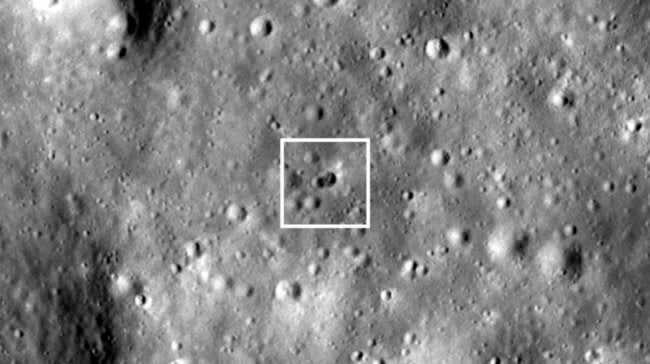

Scientists have recently made an intriguing discovery on the Moon – a unique double crater that was formed as a result of a spacecraft’s impact. 🚀 This finding has left researchers wondering about the nature of the object that collided with the Moon’s surface and the reasons behind the unusual shape of the crater.
Upon closer examination, skeptics have observed that in certain lunar images, there are noticeable discrepancies in the shadows cast by objects in side lighting conditions (Fig.1). This phenomenon is unexpected, considering that the Sun is located at a considerable distance from both the Moon and the Earth (approximately 150 million kilometers), and its rays should theoretically be nearly parallel.
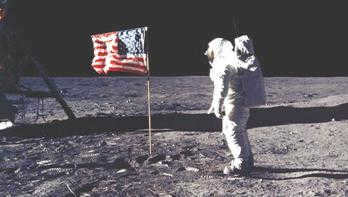
Ill.1. Astronaut and the flag. The shadows are spreading apart
Thus, doubters argue that the primary light source for the first image was not the Sun, but rather a spotlight positioned behind the left edge of the frame, indicating that the photograph was taken on Earth.
In response to this, proponents offer the following counterargument [1, p.3]:
“Astronauts consistently landed in areas where the Sun had recently risen and was positioned low in the sky (preventing the lunar surface from becoming too hot). As a result, the sunlight would gently illuminate the surface, causing the direction and length of the shadows to noticeably change even due to minor irregularities.”
Well, this explanation seems quite reasonable, particularly considering that the terrain in the first image is indeed slightly uneven, causing the module’s shadow to appear to ascend the gentle slope.
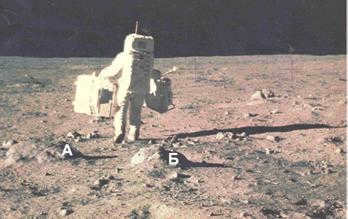
Ill.2. Fan of three diverging shadows
However, the doubts are once again brought back to life by the subsequent photograph (Fig.2). It is the same expedition (A-11), but the landscape is different and, coincidentally, quite flat. Once again, the irregularities of the terrain appear to be coincidental, yet they are positioned in such a manner that the shadows from the astronaut and the surrounding rocks once again diverge.
Here we observe a trio of shadows – emanating from the rocks A and B as well as the astronaut. The topography appears to be devoid of any notable anomalies. And if any had eluded detection, how could these imperceptible and coincidental abnormalities result in a synchronized divergence of three shadows forming a fan shape? However, this arrangement of shadows corresponds to the positioning of a spotlight situated just beyond the left boundary of the frame (refer to the addendum in the section).
Further Reading
Card 13: Consciousness, Illumination, Cognition, Memory, Light and Darkness, The External Equivalent of the Ajna Chakra, The Third Eye
Article 13: Consciousness, Illumination, Cognition, Memory, Light and Darkness, The External Equivalent of the Ajna Chakra, The Third Eye
The transparent heavens seamlessly blend into the cerulean blue sea, gradually shifting to a bluish hue. The transition from sky to ocean is so gentle and delicate that it eludes the observer’s perception. Amidst the sky and the ocean.
Chapter 3 “Soaring from darkness to brightness…”
Chapter 3 “Soaring from Darkness to Light…” WHAT THE “Ivory Crowns are Capable of” The underground economy has established such a strong presence in our nation that offenses associated with it are not typically regarded as criminal by regular individuals – it appears to be the norm. Millions of Russians
Emerging from obscurity, Dmitry Medvedev faced the challenge of capturing attention during his initial two years as president. The global media dismissed Medvedev as a mere puppet successor, undermining his credibility. This perception persisted even during his announcement of the resolution to the Georgian conflict.
Under the shade of the canopy
Nestled in the shadows beneath the awning, a Japanese household possesses such a unique architecture that it becomes challenging to determine who influenced whom: whether the dweller of this abode used it as a means to express their way of life or if the Japanese house molded the idiosyncratic habits of its residents.
Light and Shadows
Light and Shadows And they achieved it! In 2003, I had the opportunity to meet a pair of elderly immigrants from Argentina who harbored a deep hatred towards everything Soviet. They had departed from the Soviet Union at a very young age during the war. However, even they acknowledged that if there was indeed a famine in 1933, then there was indeed a famine in 1933.
10. Illumination and Shadows Initial uncertainties Critics have observed that in certain lunar images when illuminated from the side, the shadows of objects appear to be slightly askew (Fig.1). This phenomenon can be attributed to the vast distance between the Sun and the Moon (approximately 150 million kilometers) and the resulting angle at which the Sun’s rays reach the Moon.
Amidst the aftermath of a hurricane
Amidst the aftermath of the hurricane, I was taken aback by the lack of media coverage on the devastating floods that occurred in Bavaria, Switzerland, Austria, the Czech Republic, and Romania. It was during this time that a true catastrophe unfolded in the other hemisphere – Hurricane Katrina. Three states – Alabama,
While standing in the shadow of the pyramids, I am struck by the fragility of our earthly civilization. When natural forces awaken, or when we humans awaken them, it becomes clear that there are no powers in the world that can withstand them. This fact is exemplified perfectly in the magnificent
shadows of Paris
.
As you stroll along the Champs Elysees towards the Place de la Star, you are surrounded by chestnut tree-lined paths and ancient plane trees drooping from the heat. Peeking through the plane trees, you can catch a glimpse of the majestic winged horses perched atop the glass roof of the Grand Salon. The atmosphere is enchanting.
Shadows in the Snow: An Artistic Reflection
Shadows in the snow have long been a subject of fascination in various forms of artistic expression, including literature and poetry. One notable work that explores this theme is Anatoly Rybkin’s collection of poems titled “Shadows in the Snow.” In this collection, Rybkin skillfully captures the ethereal beauty of shadows cast on a snowy landscape. Through his evocative verses, he paints a vivid picture of winter’s quiet stillness and the mysterious allure of these fleeting shadows.
Shadows on the Avenue: A Literary Journey
“Shadows on the Avenue” is a bibliomaniac’s treasure trove. This book, authored by Alexander Kabakov, is a compilation of stories that takes readers on a captivating journey through the eponymous avenue. Kabakov skillfully weaves tales that transport us to a bygone era, where shadows played a significant role in shaping the narrative. From the cobbled streets to the old buildings, these shadows serve as silent witnesses to the tales of love, loss, and longing that unfold within this literary masterpiece.
Shadows Reflected in Mirrors
Bibliomaniac. A Collection of Books Entitled Shadows Reflected in Mirrors by Boris Ehrenburg. The Civilization of the Guardians Explored (The Language of Animal Style and the Symbolism of Figures). – Perm: Senator Publishing House, 2011. – Limited to 1000 copies. Drawing a parallel between the folklore of the Khanty, Mansi, and Ogro-Finns and the depictions of the mythical human Moose,
Historical prose: the brightness and darkness of success
Historical Prose: Brightness and Darkness of Success The collaborative endeavor “Nevsky Prospekt” Historical Prose: Brightness and Darkness of Success PETERSBURGIAN WATCH Pavel Vinogradov Recently in St. Petersburg, a series of events celebrating the historical prose of St. Petersburg took place, with the generous support of the publishing house “Astrel-SPb”.
Three shadows Portfolio “LG” Three shadows Mikhail Filin Individuals who have been raised in the traditions of the esteemed old culture would certainly be acquainted with L.A. Chereysky’s essential guidebook “Pushkin and his milieu”, which provides biobibliographical details about individuals who have associated with
Flashes and shadows
Flashes and shadows Literature Flashes and shadows FIRST IN “LG” Lev KOZOVSKY Born in 1966? Muscovite. By education a theater artist. He worked as a set decorator in Moscow theaters and studios. Poems Kozovsky presented “LG” his teacher Eugene Rein. Heavenly move All gone
– There is only one source of light on the Moon: the Sun. Therefore, the shadows produced by the astronauts and their equipment must align in the same direction. It’s as simple as that. Percy discovered that the photographs tell a different story! Take a look at this example (Figure 29), where the shadows have varying lengths and directions!
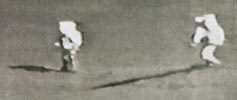
When it comes to the moon mission, photographs serve as compelling evidence of its falsification. Mr. Percy claims that “The photographic and video evidence speaks for itself,” but his lack of understanding in photography is evident. One objection that arises is the possibility that the photo was taken in a pavilion with multiple spotlights. In this case, why do the two astronauts not have four shadows each, similar to soccer players during matches? Are the spotlights selectively illuminating certain areas? Let’s put the searchlights aside and focus back on the moon:

Despite having the same astronaut, the same Sun, and the same angle of incidence, the shadows vary while the tilt remains insignificant. This presents a challenge! You don’t need to possess knowledge of geometry or lunometry, Mr. Percy.
Whenever the astronauts landed, they chose locations where the Sun had recently risen and was positioned low above the horizon (ensuring that it hadn’t had enough time to heat up the Moon’s surface). Consequently, the Sun’s rays cast hollow shadows on the surface, and even minor irregularities can noticeably alter the direction and length of the shadow (Figure 30).
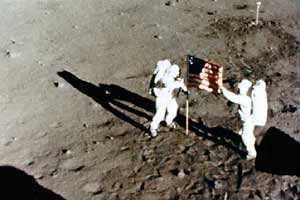
Take a look at the image (Figure 31) purportedly captured by the Apollo 11 astronauts. Armstrong and Aldrin appear to be of equal height, but interestingly, one of their shadows is one and a half times longer than the other. It is possible that they were being illuminated from above by a spotlight, resulting in the variation in shadow length, much like what one would see under a street lamp. Additionally, it raises the question of who took this photograph, considering both astronauts are present in the frame.
It is worth noting that this is not an actual photograph, but rather a still from a film. The film camera was affixed to the lunar module (positioned behind the porthole) and could capture footage independently of the astronauts.

The length of a shadow cast by a street lamp is inversely proportional to the distance between the lamp and the object. However, on the moon, the opposite is true: the closer an astronaut is to the light source, the longer their shadow becomes. This phenomenon can be explained by the uneven surface on which the shadows fall. For instance, Figure 32, sourced from http://www.clavius.org/, illustrates this concept by depicting two cylinders of equal height. One cylinder is positioned on a plane that tilts slightly downwards away from the light source, while the other cylinder is positioned on a plane that tilts upwards. When observed from above, it becomes apparent that the shadow cast by the second cylinder is shorter than the shadow cast by the first cylinder.
Y. I. MUKHIN. It is evident from this passage that we are dealing with a translation. Firstly, a certain Mr. Percy is mentioned, who is not well-known to Russian-speaking readers. Secondly, it is noticeable that the text is messy, indicating that NASA either failed to edit it after translation from English, or, not understanding the content, were afraid to edit it after translating into Russian themselves. For example, what does the phrase “The shadows are different, while the slope is insignificant” mean? The slope of what or whom? Furthermore, it should be mentioned that the discussion of different directions and lengths of shadows “on the Moon” from objects of the same height was not happening in the CIS territory. In fact, I only paid attention to shadows in this aspect after NASA’s hives started justifying themselves. So, thanks to them!
However, take note of their approach – how swiftly they dismiss any discussion about the shadows created by the spotlight. Even a non-expert like Percy can discern that the shadows present on the Moon in the “lunar photos” could only be produced on a Hollywood movie set. It is evident that these shadows were formed by the light emitted from the spotlights. After all, the film crew had the responsibility to brightly illuminate the entire “Moon” area within the pavilion. In order for the astronauts’ shadows to appear on the illuminated surface, each “astronaut” had to be brightly lit individually. To achieve this, individual spotlights were positioned in close proximity to the illuminated objects, resulting in clearer shadows. As a result, these spotlights would sometimes interfere with each other, leading to the placement of some spotlights farther away, closer, higher, or to the side. Consequently, the shadows cast by the spotlights would be in different directions and vary in length. In the NASA chiwi-provided photo (featuring the “astronauts” at the flag), the left astronaut is illuminated by a spotlight at an approximate angle of 40°, while the right astronaut is illuminated at an approximate angle of 28°. This kind of illumination is not characteristic of sunlight, as the shadows produced by the sun would be parallel, and objects of the same height would have shadows of equal length. Moreover, the light beam from a searchlight can only be considered parallel at a significant distance, as the rays become convergent when in close proximity to the searchlight. The convergence depends on the relative sizes of the searchlight’s mirror and the illuminated object. In the mentioned photo, the flagpole does not cast any shadow on the astronaut’s spacesuit, even though it should be illuminated by the sun.
Modeling shadows is a straightforward task. Grab a few small objects (batteries work well), a couple of lights, and engage in a little experiment: place the batteries side by side and shine the lights on them from a short distance. You’ll notice that you can easily manipulate the objects’ shadows to fall in various directions and have varying lengths. Next, take these objects outside into the sunlight and observe that, regardless of how you position them, the shadows will always be equal and parallel.
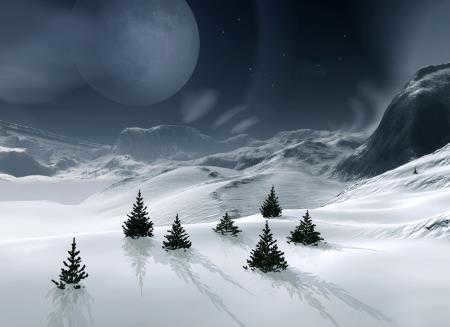
Fig. 34 (as well as 33, 35, 36) I don’t possess, obviously, but if you want to make a fuss with shadows – go ahead…
In Fig. 33, two batteries on the windowsill are being illuminated by the setting sun. The shadows they cast are completely identical and perfectly parallel. Figure 34 depicts a winter landscape where all shadows are proportional to the height of the objects and strictly parallel.
However, the same batteries cast shadows not only at an angle but even in opposite directions (Figure 35). And the reason for that is they are not being illuminated by the sun, so I took a couple of lamps off the walls and used them as a source of light (Fig. 36).
However, the discussion about shadows is far from over.
– This image (Fig. 37) is utter nonsense when it comes to shadows.
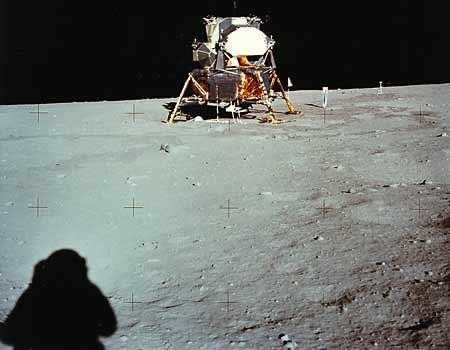
The photographer’s back is directly facing the sun, but the lunar module’s shadow appears to be shifting to the left. The same goes for the rocks on the right side of the image, which are clearly being illuminated from the right. This phenomenon gradually diminishes as you move towards the left side of the image. The presence of “surface irregularities” cannot account for such significant changes in shadow direction!
– However, perspective can. Take a look at the photograph (Fig. 38). You’ll notice that the rails on the right also appear to be shifting to the left, and this effect gradually disappears as you move towards the left side of the image. Yet the rails should be parallel in order for trains to stay on track!
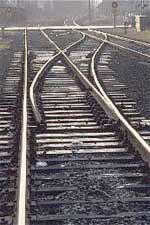
As is commonly understood, when parallel lines are present in a photograph, they will appear to converge towards a single point on the horizon. This phenomenon is clearly evident in the aforementioned images.
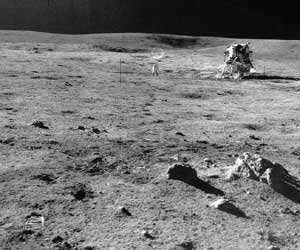
There is another picture (Fig. 39) frequently mentioned as proof of fabricated lunar images. The shadows in this photo also appear to converge towards a point on the horizon, which is situated towards the left side of the frame. It is interesting how some individuals find this ordinary phenomenon of parallel lines peculiar.
Y. I. MUKHIN. It is truly astonishing how boldly NASA presents their “explanations”. I can’t help but believe that these explanations were originally crafted for individuals with slower cognitive development, perhaps for Americans who are expected to master basic reading and writing skills by the age of 12. NASA seems determined to convince their fellow intellectuals that a “perspective” is simply when all parallel lines consistently slant to the left. They even provide a photograph as evidence, conveniently taken from the vantage point of the left rail. However, if the photographer had chosen to capture the image from the right rail, we would undoubtedly observe a “rightward bias” on the left rail instead.
– There is evidence suggesting that certain sections of the originally published lunar photos were edited, and currently, the American media archives contain two versions of these photos – the original and a censored version from which the most controversial shadows have been removed through mechanical means.
– Hmm. Why didn’t they remove the “controversial shadows” before releasing the photos to the media?
– It is possible that impatience on the part of the media played a role. They may have wanted to portray everything as perfect and didn’t want to take the time required for meticulous editing.
– But couldn’t the person who took the photos have avoided capturing these shadows in the first place?
Y. I. MUKHIN. If he had possessed the intelligence, he would have been able to accomplish it. And the most insulting aspect is that these forgeries are specifically intended for imbeciles – like a counterfeit $100 bill featuring Bush Junior instead of President Franklin….
– Let us now assess the proportion between the lower section and upper section of the descent module support (Fig. 41). It turns out to be approximately 1:1. Now, let us fill in the missing portion of the support in the image. We are aware that the ratio between the upper and lower sections is 1:1. By measuring the dimensions of the cushion on which the leg rests, we determine the ratio to be 1:0.9. Now, armed with the leg’s dimensions, we can construct it on the right side of the image. And since our constructions are only approximate, it can be included or excluded from the picture, but its shadow must definitely be present. A distinct black shadow!
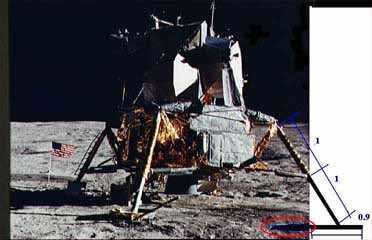
After perusing a lengthy explanation, it has come to my attention that there are concerns about the shadow from one of the supports on the moon. However, I must disagree vehemently! Allow me to explain: the supports in question are equipped with telescoping capabilities, allowing them to adjust and maintain stability on the uneven lunar surface. Contrary to popular belief, the moon is not perfectly spherical like a billiard ball; rather, it is filled with hills and valleys. Additionally, the four “legs” of the support are of varying lengths. Moreover, it is important to note that judging the direction of the completed support based solely on a two-dimensional image is not accurate. By applying logical reasoning, it becomes clear that the support is actually angled slightly away from the camera, rather than standing parallel to the lens. This fact should be evident. Furthermore, the shadow is present and located where it should be, just above the reconstruction.
Y. I. MUKHIN. Alright, chiwi, you need to indicate with an arrow where exactly this shadow is, which is positioned "just above"! No matter how you try to explain it, no matter how you try to dismiss the question by talking about the fact that the Moon is not a billiard ball, there is no shadow from the right support in the photograph, even though the shadow from the nearest support to us is clearly visible (it is narrow and extends beyond the left edge of the photograph). There should have been a shadow from the right support as well, if the "lunar model" had been illuminated by the sun, and this shadow would have extended under the bottom of the apparatus before merging with its own shadow. However, since the model is illuminated from the right by a searchlight whose diameter is much larger than the diameter of the support, the rays of light from the edges of the searchlight have obliterated its shadow. Take a pencil and a desk lamp, first cast the shadow of the pencil on a piece of paper one meter away from the lamp – it will become clear. Now bring the pencil and paper closer to the lamp’s filament, which is wider than the pencil. And you will see the shadow disappear.
– The absence of an atmosphere on the moon prevents the scattering of light, making the only source of illumination the Sun. Therefore, the shadows on the moon are expected to be pitch black. However, when examining the photograph (Figure 42), it is evident that the astronaut’s shadow indicates the Sun is situated directly behind him, causing the side that should be in shadow to face the camera lens. Consequently, all the intricate details within the shadow are clearly visible. This suggests that the shadow was illuminated by an additional light source.
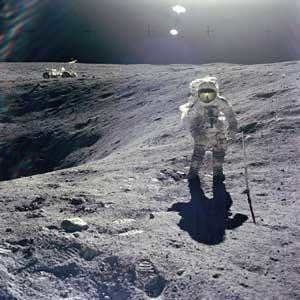
– The Moon does not have an atmosphere, but it does have a lunar surface that scatters light in all directions when it falls on it (Some of this scattered light reaches Earth, enough to be visible during a full moon.). This scattered light also reaches the astronaut and provides illumination. The astronaut’s suit is white, and the diffuse light is sufficient to make objects visible in the shadows.
– Hold on a moment! What are those white spots in the image? Those are spotlights! Why would there be searchlights on the moon? It’s a movie set in Hollywood!
– Have you seen many Hollywood movies with spotlights visible in the shot? Don’t underestimate the intelligence of NASA. Couldn’t they have positioned the lighting equipment in a way that keeps them out of the frame or at least concealed them in the photograph?
The lens possesses a symmetrical axis, which results in the flare appearing as a straight line originating from the center of the frame. It is not necessary for the spotlights to align precisely on such a radial ruler.
In the photo, the center of the frame is indicated by a large cross (Fig. 43). We can draw a line from this point that intersects the spots. It is evident that both spots lie on this line, and their form exhibits symmetry about it. This aligns precisely with what one would anticipate from optical glare.

There are numerous photographs on NASA websites featuring similar “spotlights” – NASA openly displays them and appears to be unconcerned about accusations of tampering. In these images, the white spots also align along a straight line that passes through the center of the frame, indicated by a large cross (if visible). Take a look for yourself:
Apollo 11: as11-40-5873, as11-40-5887, as11-40-5936.
Apollo 12: as12-46-6739, as12-46-6740, as12-46-6765, as12-46-6766, as12-46-6767, as12-46-6768.
Apollo-14: as14-64-9114, as14-67-9367.
“Apollo-15: as15-85-11405, as15-85-11406, as15-85-11407, as15-85-11408, as15-85-11456, as15-85-11457, as15-85-11458, as15-85-11459, as15-85-11514, as15-85-11515, as15-85-1151515, as15-85-11516, as15-87-11741, as15-87-11743, as15-87-11744, as15-87-11745, as15-87-11795, as15-87-11796, as15-87-11797, as15-87-11813, as15-87-11814, as15-87-11815, as15-87-11831, as15-87-11832, as15-87-11851, as15-87-11852, as15-90-12189, as15-90-12190, as15-90-12191, as15-90-12211, as15-90-12212, as15-90-12213.”
“Apollo-17”: as17-134-20400, as17-134-20410, as17-134-20411, as17-134-20412, as17-134-20469.
Y. I. MUKHIN. I would like to bring attention once again to the fact that NASA, or rather NASA itself, deliberately avoids conducting experiments to confirm its claims. For instance, they could easily place a person facing away from the sun on a flat surface early in the morning or late in the evening when the sun is 10-15° above the horizon, and capture a photograph showing that on Earth, with its atmosphere, the facial details of the person in the photo are even more visible. However, NASA and its associates limit themselves to engaging in pseudo-scientific discussions.
It is worth noting that in a previous post, I discussed the intriguing observation that there are visible spotlights behind the back of this “astronaut,” despite being informed that it is actually glare. However, dealing with NASA can be quite complicated – unless you provide them with something to refute, they and their representatives will simply choose to remain quiet. As a result, they have a wealth of information to share, and since they are unable to address the one topic they cannot discuss, they end up discussing numerous other subjects.
The searchlights can also be seen in the NASA photos (Fig. 9), although the NASA critics claim that we are underestimating the intelligence of the NASA personnel. (However, in this particular case, it is indeed a flare, and the NASA experts failed to mention that the flare is not only along a line originating from the center of the lens, but it connects the center of the lens to the source of the flare, which could be either the sun or a spotlight. There is a pin stuck into the ground next to the “astronaut” and its shadow also points towards the light source. If this photo was taken on the Moon, then the only possible light source would be the sun, and consequently, the shadow from the pin should be parallel to the line on which the glare is located. However, those lines are not parallel and intersect just above the top edge of the photo – at the exact spot where the spotlight that illuminated the back of this “astronaut” was positioned. Therefore, one may argue that everything on the Moon can be seen in the shadows, but the converging point clearly indicates that this is not the Moon after all (Fig. 44).
However, there is also another proof that discredits the authenticity of this photo. The Nasovites provided detailed information about the camera lens that was supposedly used to capture the Moon images. According to them, the lens has a capturing angle of 53° and the distance between the crosses on it is approximately 10°. By using these parameters, it is possible to calculate the shooting details (I won’t provide the calculation here, but readers can do it themselves by remembering the tangent of the angle). The angular size of the “astronaut” in the photo is around 15°, assuming that his height is 2 meters, we can estimate that the distance between him and the camera was about 7.5 meters. According to the story, the camera was attached to the astronaut’s chest, at a height of about 1.5 meters. From here, we can estimate the distance to the surface and the lower edge of the photo, which is approximately 3 meters. Therefore, the distance from the lower edge of the photo to the “astronaut” is approximately 4.5 meters, and the length of the astronaut’s shadow is a little over half of this distance, which is up to 2.5 meters. This indicates that the searchlight illuminated “Charles Duke” at an angle of about 40° (Fig. 42). This angle is at the limit of what is possible, and the photo could be considered authentic based on this parameter if the story mentioned that the astronauts were already loading into the lunar module to leave the Moon. However, in reality, they are just beginning to examine it or are in the middle of the process. Therefore, the real sun could not have been shining at an angle of 40° during this time, making this photo a fake.
– And there is certainly no lack of artificial lighting here!
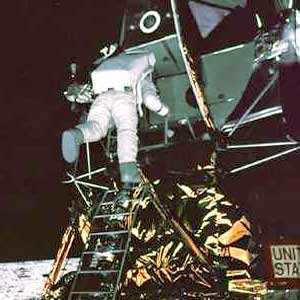
In the image depicted as Figure 45, the astronaut can be seen in shadow, with a rather unexpected amount of illumination. It is worth noting the distinct and intense glow on the astronaut’s shoes, as shown in the cropped section on the right side of the photograph. This luminosity strongly suggests the existence of a powerful light source positioned on the same side as the camera.
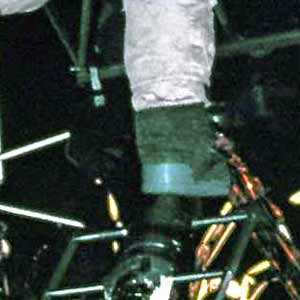
– Let’s examine in more detail how the astronaut’s body is illuminated. The parts of the body facing upwards are the least illuminated: the back surface of the satchel, the arm above the elbow, and the side of the left shin facing the sky. This indicates that the light is coming from below rather than from the camera. Furthermore, this illumination is produced by the light scattered by the lunar surface.
What about the glow on the astronaut’s shoes (Fig. 46)? Is it also coming from the lunar surface?
Y. I. MUKHIN. Therefore, we have received a “competent” explanation from NASA regarding the chiwi, stating that in this instance the “astronaut” is being illuminated from beneath by the light reflected from the ground and his colleague’s radiant happiness. Let’s assume that we are convinced about the astronaut, but what about the apparatus itself? It is not being illuminated from below, but rather from the left and above! Where is this light coming from? Furthermore, the astronaut himself is being illuminated from above – his satchel facing upwards is not in shadow, but merely slightly darkened. The foil that wraps the lower parts of the descent vehicle glistens in the light from above. So, are we to consider Nasovs as fools or not, especially when we have yet to see a single credible photograph – each one providing undeniable evidence that they are taken on Earth in a film studio.
Also Check Out
Behind the Scenes of Shadows
For a while now, there have been numerous reports stating that the Commission of Inquiry, under the explicit instructions of Nicholas, did not thoroughly investigate. Had they conducted a more extensive investigation, it is likely that a significantly greater number of individuals would have been sent to prison.
Hidden Secrets Unveiled
Unveiling the truth behind the scenes has been a topic of discussion for quite some time. It is widely believed, based on numerous accounts, that the Commission of Inquiry, under strict instructions from Nicholas himself, deliberately avoided thorough investigation. Had they truly delved into the matter, the number of individuals convicted and sentenced to penal servitude would have been significantly higher.
Light and shadows.
Light and shadows. And they achieved their desired outcome! In 2003, I was required to have a meeting with a pair of elderly immigrants from Argentina who held a deep disdain for all things Soviet. They departed from the Soviet Union to seek refuge in the West at a very tender age during the war. Surprisingly, even they acknowledged the existence of a famine in 1933, if it indeed occurred.
Little is known about the years that Katushka and her daughter spent in Russia after their arrival from Mecklenburg and before Anna Ioannovna’s accession in 1730. Furthermore, very little is known about the girl’s character. However, I speculate that she had a typical upbringing. In 1722, Berchholz mentioned that at one point,
Shadows on the Bridge
Robert Lewis, the co-pilot of the aircraft named “Enola Gay” from which the atomic bomb had just been released, recoiled in terror at the sight that unfolded before him. “Oh my goodness, what have we unleashed?!” he exclaimed, his mind filled with horror. Spread out beneath him was a fiery Hiroshima,
SHADOWS ON THE BRIDGE
Shadows on the Bridge, a terrifying scene unfolded before the eyes of Robert Lewis, the co-pilot of the aircraft known as the “Enola Gay,” which had just released the devastating atomic bomb. Overwhelmed by what he saw, Lewis recoiled in horror and uttered, “My goodness, what have we unleashed?” Spread out beneath him was a raging inferno that was once the city of Hiroshima.
Under the shade of the canopy
The Japanese dwelling is so unique in its design that it’s hard to determine who influenced whom: whether the resident shaped their philosophy of life through the house, or if the house itself molded the distinctive habits of its occupants.
Shades of the Past The renowned Carthaginian champions, both mythical and real, transformed into background characters of early Roman history. The famous tale of Dido and Aeneas, which concluded with the treachery of the Trojan who abandoned his beloved, the Queen of Carthage, and sailed to Italy,
Impressive shadows
Impressive Shadows It is accomplished! Pushkin stood before her. Young Dodo did not confess to anyone how she longed for this moment, how she prepared for it. She knew almost everything by heart about what became known from his poems. And the circumstances of his life. The poet departed from Moscow in the year of her birth,
Under the Influence of Caligula
Under the Influence of Caligula, it appears puzzling how individuals as noble and majestic as Germanicus and Agrippina the Elder could raise such vicious monsters like Agrippina the Younger and Gaius Caligula. However, upon further examination
Chapter 14. Shadows in Paradise
March 12 (25), 1920 marked the return of Kshesinskaya to her beloved villa “Yalam” after a prolonged absence of six years. Following the tumultuous Russian Civil War, France appeared as a veritable paradise to Mathilde. She expressed her elation at being back in her own abode, where she could bask in the comfort of being surrounded by nothing but her homeland.
It is evident that the current generation of Nasovians and their Hivis are hesitant to discuss the topic of the shadows’ length on their “Moon”. They have provided a table displaying the angles of the Earth’s position above the Apollo landing site, but there is a lack of information regarding the Sun’s position above the horizon during the “moon landings and stay on the Moon”. (Wow! Just consult Fomenko and he will effortlessly calculate the solstice angle for every second of each “stay”. It’s interesting that you are currently fact-checking with astronomy. – J.) In the past, the Nasa team also avoided addressing this issue. The “old” NASA hivy A. Markov delves into this matter (OD serves as the “main evidence” that there were “no Americans on the Moon”).
So, the fact that the astronaut descending in the photo is Aldrin and not Armstrong is not something I see as a mistake in OD. The important thing here is something completely different. In the photos of Aldrin’s exit and descent to the Moon, which are typically included in albums (such as as11-40-5862, -63, -66, -67, -68), it is impossible to determine the angle of the Sun because there is not a single object with a complete shadow in them.
However, we can estimate the angle at which the Sun is positioned above the horizon by analyzing frames AS 11-40-5868+5864+5865. These frames show a complete shadow of the segment of the “-Y” module rack, extending from the dish support to the horizontal spacers. We also have an approximate idea of the distance from which the astronaut took the picture. The marked section of the rack has a height of 0.9 meters, and the shadow of the junction between the rack and the horizontal struts is about 2.0 meters away from Armstrong’s feet. Armstrong himself stands at a distance of approximately 3.5 meters from the rack’s “+Z” plate support and about 7.0 meters from the “-Y” plate support. Taking into account that the shadow section lies on the ground, the length should actually be 4.0 meters. Although this calculation is somewhat conditional and does not account for photo distortions, it is sufficient for the purpose of this example. Let the authors of the OD determine the angle of the right triangle with a base of 3.5-4.0 meters and a height of 0.9 meters. It appears to be closer to 7.24° than 60°?
Why don’t the OD authors consider the second panorama of Apollo 11, where there are all the necessary elements for measurements? There is the time of shooting the frame, the full shadow of the Lunar Module (LM), the flag, the TV camera on the tripod, the figure of the astronaut, and the shadow of the photographer. Once you take into account the angle of the Sun above the horizon, everything will become clear. Unfortunately, everyone interprets what they see based on their own biases.
That’s why I don’t want to spend too much time in this article analyzing all the “questionable photos” of the Apollo mission. Such an analysis would be similar to the one you just read.
Poor hivy Markov! He is completely clueless about the information that NASA has provided. It’s interesting to note that NASA specifically chose a photo with the longest shadows to debunk it, but even then they were hesitant to calculate the angle of the “sun”. They were probably confident that someone like Markov wouldn’t be able to figure it out. Markov, however, will still submit this article to the magazine, where the concept of tangents is considered forbidden knowledge. Let’s now calculate the angle of a triangle with sides measuring 0.9 and 3.5 meters. It comes out to be approximately 14.5°. Based on this angle, it is clear that the sun could not have been directly above the Apollo 11 landing site. Now, let’s consider which angle the length of the shadow is closer to. If an object is 0.9 meters tall, a sun angle of 60° would cast a shadow of about 0.5 meters, while a sun angle of 7.5° would result in a shadow of 7 meters. On the other hand, a 3.5 meter object would cast a shadow of 3 meters at a 60° angle and a shadow of 3.5 meters at a 7.5° angle. Comparing these values, it is clear that the 3.5 meter shadow is “closer” to the 7.5° angle, chiwi.
However, that is not the only thing to note. If you observe Figure 89, NASA has employed an unconventional method of joining the photos together – in a step-by-step manner. This approach is taken to extract the appropriate photo from above, as it also captures the presence of the “sun” and, consequently, its angle above the horizon. The complete version of this stitched image can be found on NASA’s website www.hq.nasa.gov under the reference number as11-5863-69 (Figure 90). On the “lunar cockpit,” you can spot two crosses (highlighted by a white rectangle), between which the angular distance between them is confirmed to be 10 degrees by chivi. By utilizing the linear distance between these crosses as a scale, we can calculate the angle of the “sun” above the “horizon” in the image. It turns out to be 30 degrees, not 7.5 degrees. Quite deceitful, isn’t it?
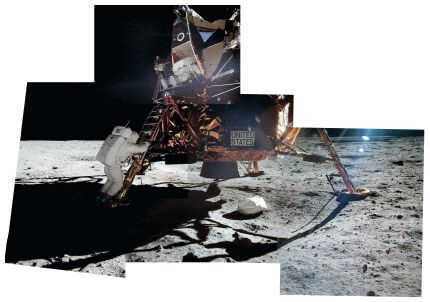
After carefully reviewing all the images provided to us by NASA, it has become evident that none of them were actually taken on the Moon. Instead, all of these photographs were captured in a controlled environment, most likely a studio or pavilion. It is disheartening to think that we are being encouraged to marvel at the supposed accomplishments of the United States in space, when in reality, they may be deceiving us. While we may still find these images impressive, it raises the question of whether we can truly respect ourselves in light of this deception.
Related Articles
The Epic Clash of Shadows
The Epic Clash of Shadows Oh, those Russians! Such unique individuals! A remarkable civil war! Anything but a mere skirmish… A copy of an unidentified French officer was spotted at the Tsarskoye Selo station on October 29, 1917. We bid farewell to Kerensky at midday on October 25, as he drove off.
"The duration is in motion!" However, who were these vessels, who were these individuals who, without the assistance of machinery, relying solely on wind and weather, accomplished such unprecedented outcomes? Clippers[29] emerged[29] – in shipyards across America, and their innovator was the architect John Griffith. They were initially
Shadow Theater.
Let’s go back to the east, to Russia. The February Troubles and subsequent abdication of the Sovereign caused a ripple effect among the authorities. This was felt everywhere, including in Kiev. On March 17, 1917, the leaders of the Kiev parties gathered in the City Duma and established an Executive Committee for themselves.
CHAPTER SEVENTEENTH LAND OF SHADOWS
CHAPTER 17 The Shadowy Land The mist danced in front of the troops, while the rivers were adorned with alder shrubs of a greenish-gray hue. Below, there were soft moss and deceptive marshes, with crimson shoots entwining the dull rocks. A profound stillness enveloped the land. Falcons soared above the treetops, but the melodious songbirds were absent.
Moon Cities: The Curious Case of Stalin’s Moon Base Plan
Unveiling the Mystery: the Mysterious Disappearance of NASA’s 700 “Lunar” Reels
Water on the Moon: Unlocking the Secrets of Potential Life
On July 17, 1945, Scientists Unearthed the Ideal Conditions for Life’s Genesis in Potsdam at Exactly 17:00
The history of medieval professional espionage, known as ninjutsu, holds many secrets about the elusive shadow men. It is safe to say that the word “ninja” ranks among the top ten most well-known Japanese words outside of Japan.
The Long French League Annex
In a report, a staff officer shares an intriguing piece of information regarding the length of the French league. He compares it to the English league, stating that the French league is twice as long. Although he does not provide the exact measurement, he does provide the lengths of various daily passages, allowing for a rough calculation.
Description of Russia, its latitude and longitude, and the names of its regions
Russia, formerly known as Sarmatia, underwent a change in name due to its fragmentation into numerous small and independent regions. These regions operated independently of one another and were beyond the control of a central authority. In the Russian language, the word “rose” translates to “rose,” which may have influenced the decision to change the country’s name.
Chapter One: Russia’s Geographical Features and Regional Names
In this first chapter, we will explore Russia’s unique characteristics, including its latitude and length. Additionally, we will delve into the various names that have been used to refer to different regions of Russia throughout history.
Chapter 20 Women of Shadows
Chapter 20 Women of Shadows In contrast to my colleagues, I have spent very little time in the cities and have seldom frequented bars. I have never set foot in any of the numerous brothels either. I have endured much mockery from my fellow military men due to this. It is difficult to articulate why I, like Tatsuno, have chosen to distance myself from these urban establishments.
“Garden of Electric Shadows” The cinema – the “garden of electric shadows” proved to be the most impactful method of immersing East Asian societies into Western culture, reaching every major city and town. The silent films had the most profound effect, shaping their narratives and themes.
Act Three of the Shadow Theater
Every comparison may be considered inadequate. In this case, the comparisons derived from the world of theater have their limitations. However, they also possess certain merits as they allow us to gain a deeper comprehension of the essence of the matter at hand.
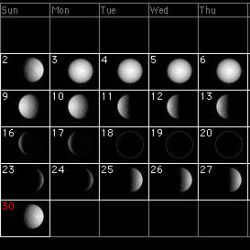
Science
- There are four different types of lunar months
- More than half of the Moon is visible from Earth
- The brightness of the Sun requires hundreds of thousands of Moons to match
- The Full Moon is brighter than the first and last quarter Moon and half
- Half of the illuminated Moon is only 95 percent as bright as the Full Moon
- Phases of the Earth can also be observed from the Moon
- Eclipses appear different when viewed from the Moon
- Craters on the Moon are given specific names following certain rules
- The Moon experiences a wide range of temperatures
- The Moon has its own time zones
- Wondering why you have trouble sleeping during a full moon? Here’s the explanation.
When the moon is in its full phase, it captivates our attention with its bright light. However, there are other intriguing secrets that the moon holds.
There exist four distinct types of lunar months
Our months roughly correspond to the duration it takes for our natural satellite to complete its full set of phases.
Through excavations, scientists have unearthed evidence that people have been tracking the passage of days since the Paleolithic era by observing the various phases of the moon. Interestingly, there are actually four different types of lunar months.
1. Anomalistic – this refers to the length of time it takes for the moon to complete one orbit around the Earth, measured from one perigee (the point in the moon’s orbit closest to Earth) to the next. This period lasts for approximately 27 days, 13 hours, 18 minutes, and 37.4 seconds.
3. Sidereal – the duration it takes for the Moon to complete one orbit around the Earth, using the stars as a guide, which lasts for 27 days, 7 hours, 43 minutes, 11.5 seconds.
4. Synodic – the duration it takes for the Moon to complete one orbit around the Earth, based on its alignment with the Sun (this is the time between two consecutive conjunctions with the Sun – the transition from one new moon to the next), which lasts for 29 days, 12 hours, 44 minutes, 2.7 seconds. The synodic month serves as the foundation for many calendars and is used for dividing the year.
We can observe slightly more than 50% of the Moon’s surface from the Earth
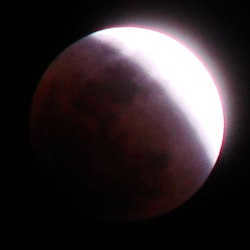
According to most reference books, the Moon’s rotation around the Earth only allows us to see half of its surface. However, during its elliptical orbit, we actually get to see 59 percent of the Moon’s entire surface.
The Moon’s rotation speed remains constant, but its rotation frequency varies, causing us to only see the edge of the Moon’s disk at times. This means that the two motions are not perfectly synchronized, although they become more aligned towards the end of the month. This phenomenon is known as longitude libration.
The Moon moves back and forth, giving us the opportunity to observe a slightly larger portion of its longitude from either side. We will always have an unseen 41 percent from our vantage point on Earth, and if there were someone on the opposite side of the Moon, they would never catch a glimpse of our planet.
It would require hundreds of thousands of moons to equal the luminosity of the Sun
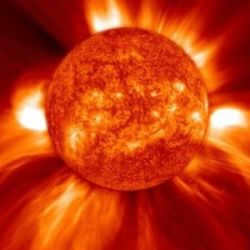
The Full Moon has an apparent stellar magnitude of -12.7, but the Sun is 14 times brighter, with an apparent stellar magnitude of -26.7. Therefore, the Sun is 398.110 times brighter than the Moon. This means that it would take 398.110 Moons to match the brightness of the Sun. However, it is impossible to fit that many Moons in the sky.
The sky is divided into 360 degrees, which includes the half beyond the horizon that is not visible. This means that there are over 41,200 square degrees in the sky. On the other hand, the Moon only covers half a degree, which is equivalent to 0.2 square degrees. So, you would need 206,264 full Moons to fill the entire sky, including the half beneath our feet, and still have 191,836 left to match the brightness of the Sun.
Full Moon is brighter than First and Last Quarter Moons and Half Moons
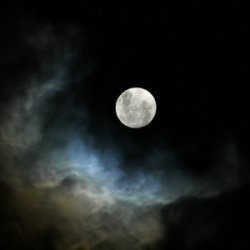
If the surface of the Moon resembled a perfectly smooth billiard ball, its brightness would be consistent across the entire surface. However, due to the Moon’s irregular topography, particularly in the areas where light and shadow meet, the brightness varies significantly. This is because the Moon’s landscape is filled with countless shadows created by mountains, boulders, and even minuscule particles of lunar dust. Additionally, the Moon’s surface is covered with dark areas. As a result, during the first quarter, the Moon appears 11 times less bright compared to when it is full. Interestingly, the Moon is slightly brighter during the first quarter than the last quarter, as certain parts of the Moon reflect light more effectively in this phase compared to others.
Half the brightness of a full Moon is observed when 95 percent of the Moon is illuminated
Surprisingly, the Moon appears to shine only half as bright as a full Moon approximately 2.4 days before and after its peak. Despite the fact that 95 percent of the Moon is illuminated during this period, many casual observers mistakenly believe it to be a full Moon. However, its brightness is actually reduced by approximately 0.7 magnitudes compared to when it is in a complete phase, resulting in it being half as bright.
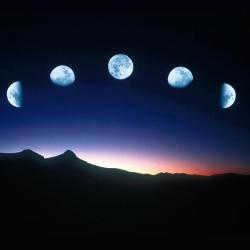
However, the lunar phases on the Moon are the inverse of those seen from Earth. When we observe a new moon from Earth, we can see the entire Earth. Conversely, when the Moon is in its first quarter, the Earth appears to be in its last quarter. Additionally, when the Moon is between the second quarter and full moon, the Earth is visible as a crescent moon. Finally, when we observe a full moon, the Earth is in its new phase.
From any location on the Moon (except for the far side where the Earth cannot be seen), the Earth occupies the same position in the sky.
When viewed from the Moon, the Earth appears four times larger than the full Moon, and depending on atmospheric conditions, it shines anywhere from 45 to 100 times brighter. The full Earth illuminates the lunar landscape with a bluish-gray light.
Eclipses on the Moon cause variations in lunar phases

Not only do the phases rearrange themselves when observed from the Moon, but when observed from the Moon, lunar eclipses become solar eclipses. In this scenario, the Earth’s disk obscures the Sun.
If the Earth’s disk completely obscures the Sun, a thin band of light encircles the dark disk of the Earth, which is illuminated by the Sun. This band has a reddish tint because it is a result of the combination of light from sunrises and sunsets that occur during that moment. That is why during a total lunar eclipse, the Moon appears red or copper in color.
During a total solar eclipse on Earth, someone on the Moon is able to witness a unique spectacle lasting for a couple of hours. They observe a small, clearly defined dark spot gradually traversing the surface of our planet. This particular dark patch is referred to as an umbra, signifying the shadow cast by the Moon onto the Earth. However, unlike a lunar eclipse where the Moon is completely engulfed by the Earth’s shadow, the Moon’s shadow, when it reaches the Earth, is several hundred kilometers wide and is only visible as a solitary dark spot.
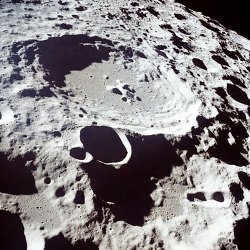
Lunar craters were formed as a result of collisions between asteroids and comets with the Moon. It is estimated that there are approximately 300,000 craters larger than 1 kilometer in diameter on the near side of the Moon alone.
These craters have been named after notable scientists and explorers. For instance, the Copernicus Crater was named in honor of Nicolaus Copernicus, a Polish astronomer who revolutionized our understanding of the solar system in the 16th century. Another example is the Archimedes Crater, which was named after the renowned mathematician Archimedes, known for his groundbreaking discoveries in the 3rd century BC.
The practice of giving individual names to lunar features started in 1645 with Michael van LangrenMichael van Langren, a Brussels engineer, who assigned names of kings and influential figures from Earth to the Moon’s prominent formations. In his detailed map of the Moon, he bestowed the title of the largest lunar plain (Oceanus Procellarum) to his benefactor, the Spanish ruler Philip IV..
However, just after six years, Giovanni Battista Riccioli.Giovanni Battista Riccioli.) from Bologna took it upon himself to create his own lunar map, disregarding the names provided by van Lungren and instead opting to assign the names of renowned astronomers. This map served as the foundation for the current system in place. In 1939, the British Astronomical Association published a catalog containing the officially designated names of lunar formations. This catalog, titled “Who’s Who on the Moon“, included all entities recognized by the International Astronomical Union (IAU).
Presently, THE IAU continues to be responsible for determining the names of craters on the Moon, as well as names for other astronomical objects. The IAU organizes the naming process for each celestial body based on a specific theme.
There are various categories of crater names today. Generally, craters on the Moon are named to pay tribute to scientists, explorers, and deceased individuals who have made significant contributions in their respective fields. For instance, craters surrounding the Apollo and Sea of Moscow craters on the Moon will be named after American astronauts and Russian cosmonauts, respectively.
The temperature on the Moon experiences a vast range of fluctuations
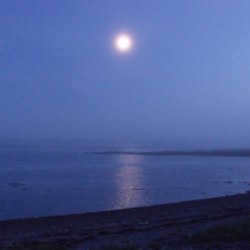
If you decide to search the internet for temperature data concerning the moon, you may find yourself feeling perplexed. According to NASA, the temperature at the equator of the moon fluctuates from extremely cold (-173 degrees Celsius at night) to extremely hot (127 degrees Celsius during the day). In certain deep craters near the poles of the moon, the temperature remains consistently around -240 degrees Celsius.
During a lunar eclipse, when the moon moves into the shadow of the Earth, the surface temperature can decrease by 300 degrees Celsius in just 90 minutes.
The Moon operates on its own time zones
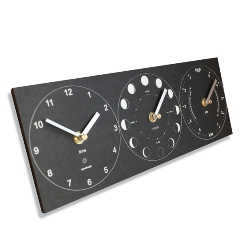
It is possible to determine the time on the moon. In fact, in 1970, a company named Helbros Watches approached Kenneth L. Franklin, who had been the chief astronomer at New York’s Hayden Planetarium for many years. The company asked him to create a clock specifically for astronauts who would be landing on the moon’s surface. This clock would measure time using “Lunations,” which is the time it takes for the moon to orbit the Earth. Each Lunation corresponds to approximately 29.530589 days on Earth.





